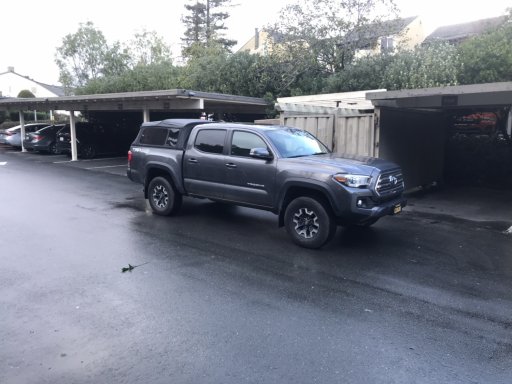
Member I
I have a 2017 Tacoma TRD OR. This was my first new car and I bought it with the intention of overlanding. I took it to Anza-Borrego my first week of having it but that was the only real trip besides some short trail car camping. I am looking to get back into it. Since my truck is still stock I am looking for some experienced advice on where to start with it. I am going to have to budget everything out.
I'm not the biggest fan on the look of the Bestop Soft Cap I have on the back but it has been pretty practical so far when it comes to moving dogs on short commutes to and from work and keeping things dry in the rain.
I wanted to jump straight into it and get some light bars, bed racks, and accessories but I quickly realized I should start with more practical mods such as Sliders.
Any advice would be really appreciated or best places to get parts and have work done. I am in the Bay Area.
This is my truck now as it stands. I only keep the mud flaps on for day to day since this is also my daily driver.
Thanks everything!

I'm not the biggest fan on the look of the Bestop Soft Cap I have on the back but it has been pretty practical so far when it comes to moving dogs on short commutes to and from work and keeping things dry in the rain.
I wanted to jump straight into it and get some light bars, bed racks, and accessories but I quickly realized I should start with more practical mods such as Sliders.
Any advice would be really appreciated or best places to get parts and have work done. I am in the Bay Area.
This is my truck now as it stands. I only keep the mud flaps on for day to day since this is also my daily driver.
Thanks everything!

Last edited:






